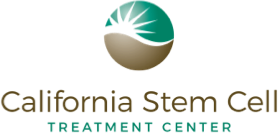A stem cell is basically any cell that heal other cells and tissues. Stem cells can both replicate to duplicate itself and also differentiate (form other cells and tissues upon demand). A commonly heard term is “adult” stem cell. These are stem cells that come from umbilical tissue, bone marrow or fat.
Why Use Fat? The California Stem Cell Treatment center’s cell harvesting and isolation techniques are based on technology from South Korea. We use adipose (fat) derived stem cells for investigational clinical treatments Early stem cell research has traditionally been associated with the controversial use of embryonic stem cells. The new focus is on non-embryonic adult mesenchymal stem cells which are found in a person’s own blood, bone marrow, and fat. Cell therapy around the world is shifting its focus from bone marrow based cells to adipose (fat) derived cells since the cells are easy to obtain and generally very robust. Adipose fat is an abundant and reliable source of stem cells. The best quality adipose stem cells are derived from the enzymatic digestion of lipo-suctioned fat which can be performed at the bedside in a closed system to protect sterility. Autologous stem cells from a person’s own fat are easy to harvest safely under local anesthesia and are abundant in quantities up to 1000 times those seen in bone marrow. Fat derived stem cells have the same telomere length (cellular age) as umbilical stem cells for the first four decades of life, but consistently remain younger than bone marrow stem cells at any chronologic age. The fat derived cells also grow in culture and differentiate faster than the bone marrow derived stem cells that are commonly used.


